Communities that have been able to make it to parliament without reservation
South Asia Check / March 29, 2018
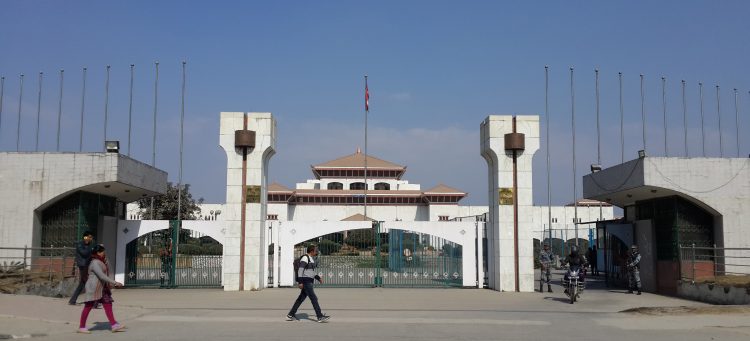
The issues of inclusion and affirmative action have dominated the public discourse in Nepal in recent days. In order to help make this discourse more fact-based, we are presenting statistics on the representation of several communities in major elected bodies of the country through the first-past-the-post (FPTP) elections.
We have presented this statistics to show which communities of Nepal have been able to send their representatives to parliament in proportion to their population, even without the aid of proportional representation (PR) electoral system.
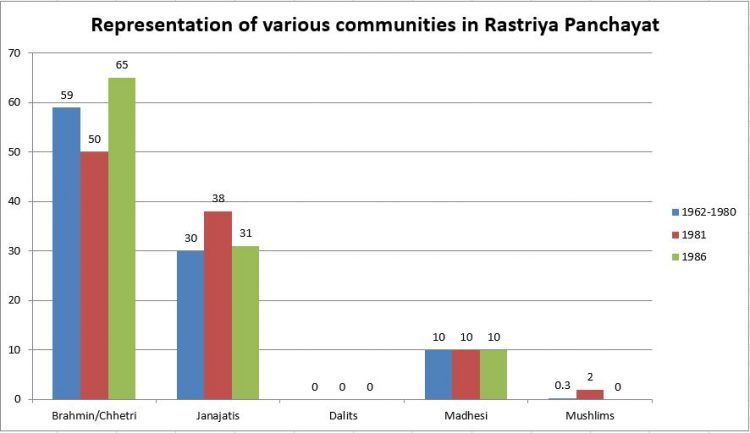
Source: Politics of Representation in Nepal, Madhes Foundation 2015
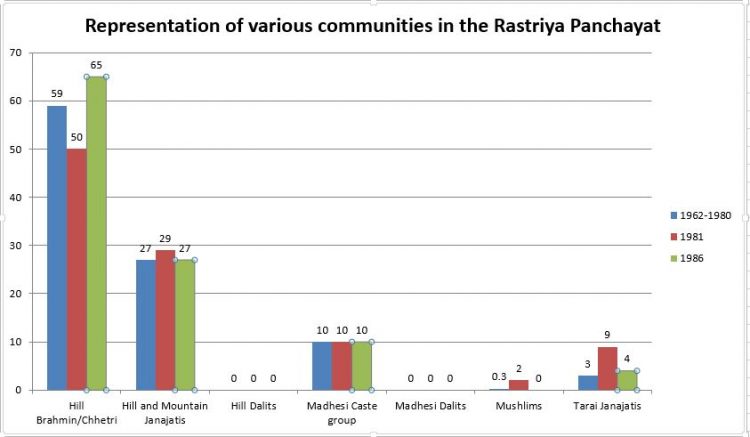
Source: Politics of Representation in Nepal, Madhes Foundation 2015
During the Panchayat period, Khas-Arya caste group (chiefly Brahmin and Chhetri) was in the dominating position in the National Panchayat [national parliament]. This group is enjoying the same position in the newly-formed parliament also. Its representation in the current parliament under the FPTP electoral system is 1.5 times higher than the proportion of its population.
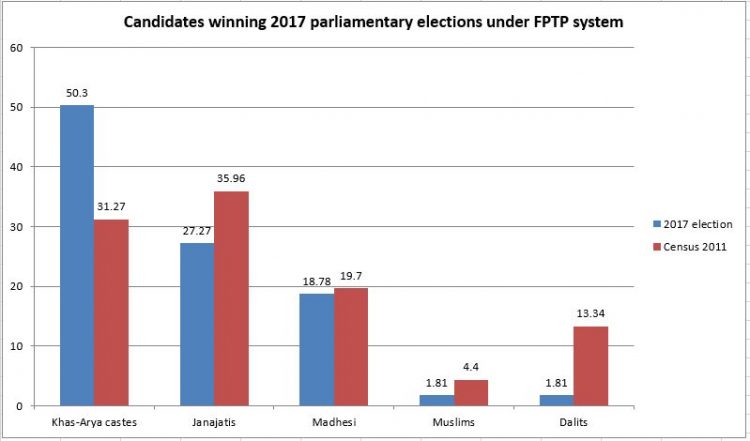
Source: Election Commission, Nepal
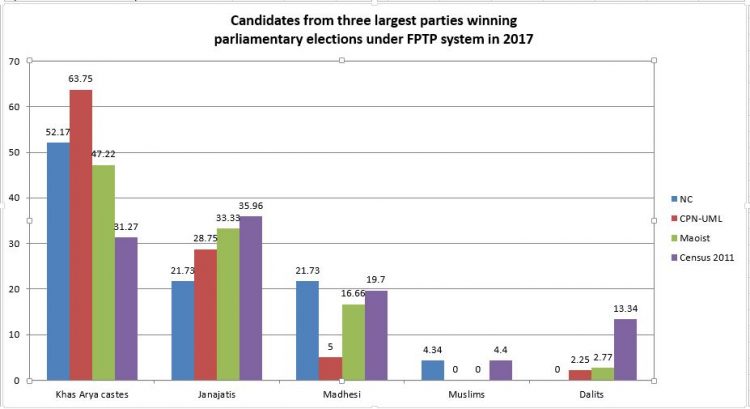
Source: Election Commission Nepal
After the restoration of democracy in 1990, the representation of Madhesi communities in parliament has increased. The number of directly elected members from this community in the first Constituent Assembly was more than their proportion in the national population. This does not mean that all communities from Madhes are reaping the benefits equally from this increased representation. In the first Constituent Assembly, only 0.4 percent members elected under the FPTP electoral system were from the Madhesi Dalit community. Madhesi Dalits comprises 4.76 percent of the national population.
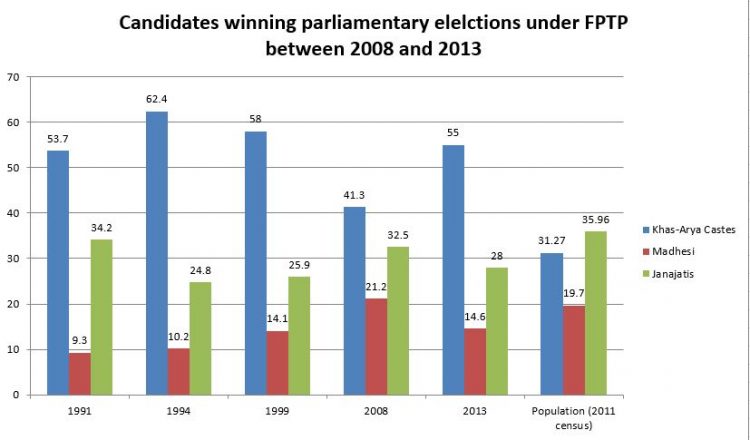
Source: Elections in Nepal, Himal Books, 2015

Source: Elections in Nepal, Himal Books, 2015
Dalits (of both hills and Madhesi) and Muslims are the two communities severely underrepresented in parliament through the direct elections. Therefore, these two communities should be the chief beneficiaries of proportional representation electoral system and reservation.
However, Newar, Gurung, Limbu, Rai, Thakali, Madhesi Brahmin, Kayastha (Madhesi), Rajput (Madhesi), Yadav and some other ethnic and caste groups have been represented proportionately or more than proportionately [with their percentage in population] in parliament through direct elections. For example, Yadav and Newar are 3.98 and 4.99 percent, respectively, of the total population, but their representation in the second Constituent Assembly through FPTP electoral system was 6.7 and 5.4 percent respectively.
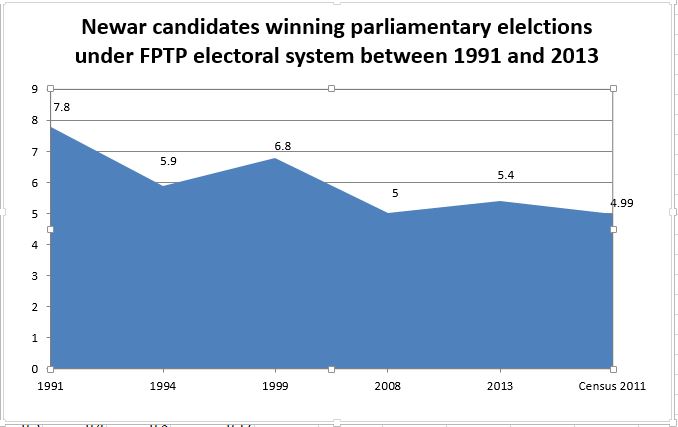
Source: Elections in Nepal, Himal Books, 2015
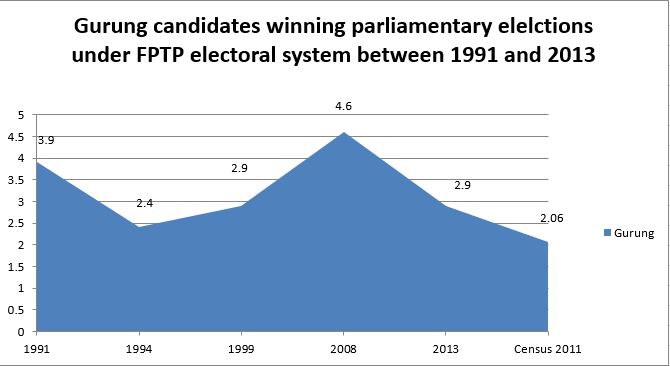
Source: Elections in Nepal, Himal Books, 2015
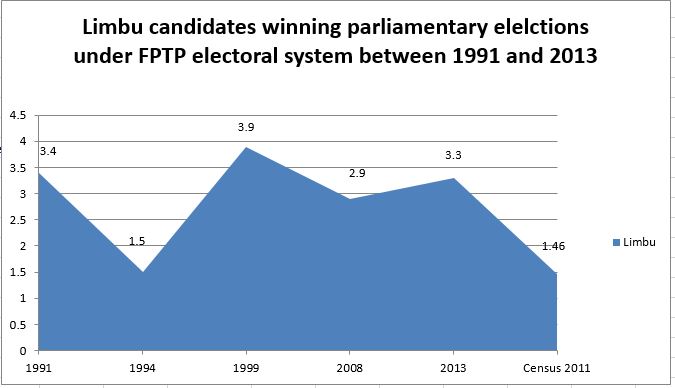
Source: Elections in Nepal, Himal Books, 2015
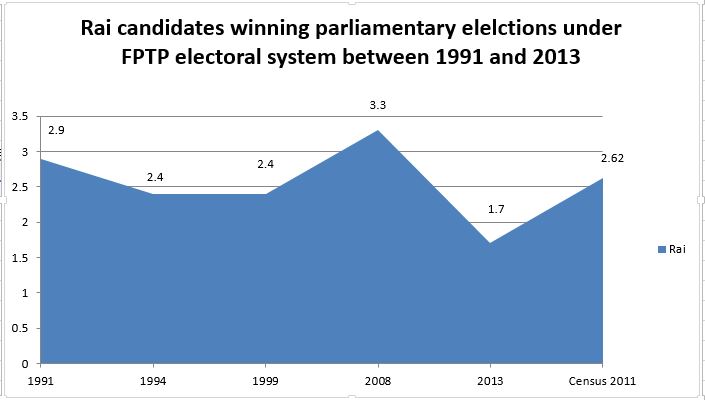
Source: Elections in Nepal, Himal Books, 2015

Source: Elections in Nepal, Himal Books, 2015
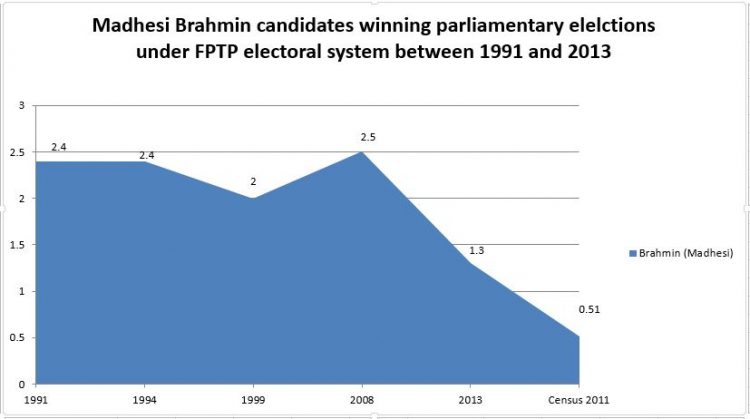
Source: Elections in Nepal, Himal Books, 2015
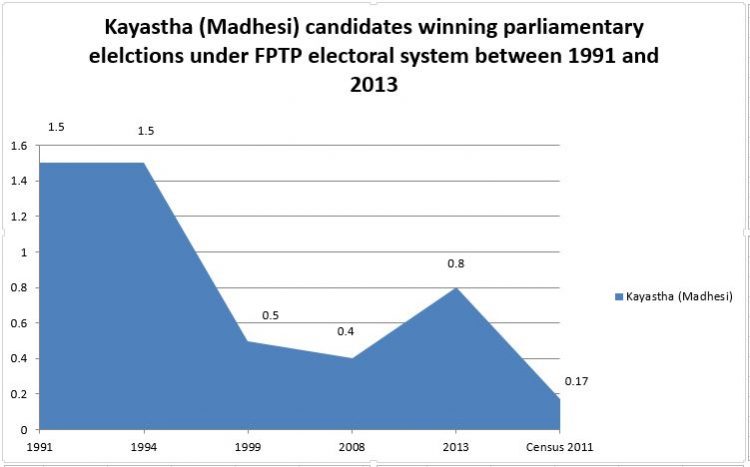
Source: Elections in Nepal, Himal Books, 2015
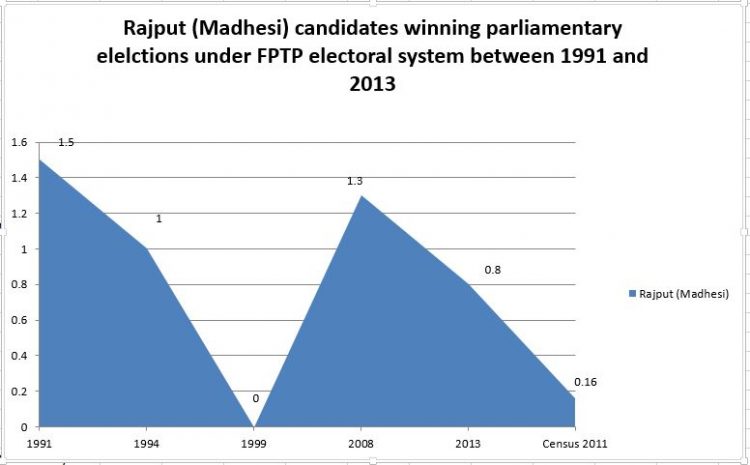
Source: Elections in Nepal, Himal Books, 2015
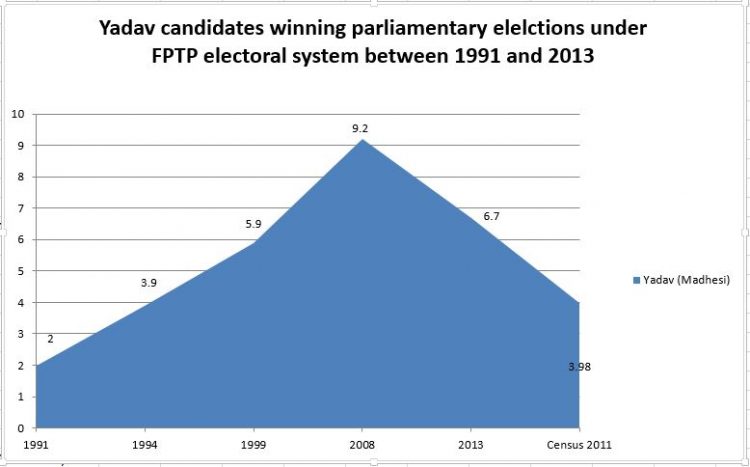
Source: Elections in Nepal, Himal Books, 2015
References
Hachhethu Krishna, Shah Tula Narayan and Kamat Ram Kumar. 2015. Politics of representation in Nepal. Kathmandu: Nepal Madhes Foundation.
Vollan, Kare. 2015. Elections in Nepal. Kathmandu: Himal Books.
Election Commission Nepal
(Prepared by Sujit Mainali and Injina Panthi)
This material is copyrighted but may be used for any purpose by giving due credit to southasiacheck.org.
Comments
Latest Stories
- In Public Interest Covid-19 cases are low, but that’s not an excuse to avoid vaccination
- In Public Interest What is BF.7, the sub-variant that has the world by its grip?
- In Public Interest Threat of a new Covid-19 wave looms large amid vaccine shortage in Nepal
- In Public Interest As cases decline, Covid-19 test centres in Kathmandu are desolate lot
- In Public Interest Dengue test fee disparity has patients wondering if they’re being cheated
- In Public Interest As dengue rages on, confusion galore about what it is and what its symptoms are. Here’s what you need to know
In Public Interest
 Covid-19 cases are low, but that’s not an excuse to avoid vaccination
The Pfizer-BioNTech bivalent vaccines authorised by the Nepal Government provide better protection a...
Read More
Covid-19 cases are low, but that’s not an excuse to avoid vaccination
The Pfizer-BioNTech bivalent vaccines authorised by the Nepal Government provide better protection a...
Read More
- What is BF.7, the sub-variant that has the world by its grip?
- Threat of a new Covid-19 wave looms large amid vaccine shortage in Nepal
- As cases decline, Covid-19 test centres in Kathmandu are desolate lot
- Dengue test fee disparity has patients wondering if they’re being cheated
- As dengue rages on, confusion galore about what it is and what its symptoms are. Here’s what you need to know